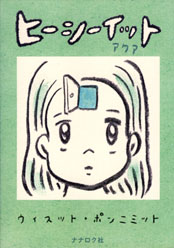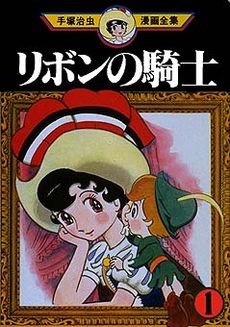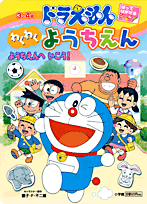Here are some details on the as-yet-unavailable-in-English manga titles included in this year’s slate of Angoulême award nominees. I apologize in advance if my translations of the French synopses are on the inelegant side. Some of the titles are a little on the obscure side, so I’m not entirely sure about their publishers of origin, either. If you have any more accurate details, please pass them along, and I’ll correct the post.
Je ne suis pas mort, Hiroshi Motomiya, Delcourt
“Okada Kenzô, 60 years old, is laid off the day before his retirement, after a life dedicated only to work. His wife and children leave him, and leave an empty bank account. After a failed suicide, he starts a new life in the wild… An astonishing chronicle of isolation.”
Originally published by Shueisha in Business Jump and Weekly Young Jump.
Le Vagabond de Tokyo, Fukutani Takashi, Le Lézard noir
“Yoshio Hori, 22 years old, is a true victim of the economic bubble of the 1980s. He settles for day jobs at the building sites of Tokyo, subsists on freeze-dried noodles and squanders his pay in hostess bars. His only other choice is life in a lonely room….”
Collected by Seirinkogeisha, though I think it might originally have been published by Houbunsha starting in 1990.
Une sacrée mamie, Saburô Ishikawa et Yôshichi Shimada, Delcourt
“Akihiro, eight years old, had to leave its birthplace abruptly to go to live in open country, with his grandmother Osano grandmother. Poor but merry and proud, she succeeds in providing for her grandson by working as a housekeeper… A delicious family chronicle, with in backdrop Japan of beginning of 1960.”
Originally published by Shueisha in Business Jump.
Sarutobi, Osamu Tezuka, Cornelius
“Adventure, fantasy and humor in Japan of the end of 16th century. Osamu Tezuka shares the exciting life of Sarutobi, a trainee ninja, and, as always with the master mangaka, each page is a subtle combination of energy, finesse and humor. A treat.”
Originally published by Kodansha in Manga King.





















 As I’d hoped,
As I’d hoped,  So today’s request is for someone to license Kyosuke Usuta’s
So today’s request is for someone to license Kyosuke Usuta’s  It stars a young man with a dream of pop stardom, Kyohiko Saketome, whose plans to become a guitarist are derailed by the mysterious Jaguar Junichi, recorder instructor and savant. These two are joined by a number of other would-be and almost-are idols, including a “hip hip ninja” named Hammer. It promises poetry showdowns, foul-mouthed robots, brainwashing schemes, and a hyper-defensive internet “star.”
It stars a young man with a dream of pop stardom, Kyohiko Saketome, whose plans to become a guitarist are derailed by the mysterious Jaguar Junichi, recorder instructor and savant. These two are joined by a number of other would-be and almost-are idols, including a “hip hip ninja” named Hammer. It promises poetry showdowns, foul-mouthed robots, brainwashing schemes, and a hyper-defensive internet “star.” The reason this one in particular speaks to me is because of its evident satirical intent. There’s plenty of goofy shônen on the shelves featuring motley casts in ridiculous scenarios, but this one seems to have that extra layer of barbed self-awareness. In other words, I’m getting a
The reason this one in particular speaks to me is because of its evident satirical intent. There’s plenty of goofy shônen on the shelves featuring motley casts in ridiculous scenarios, but this one seems to have that extra layer of barbed self-awareness. In other words, I’m getting a  I’m speaking specifically of
I’m speaking specifically of  The princess must prove her royal worth by creating a magical object, giving it to a human, and proving that the object is useful. Erika’s creation is a ribbon that allows Hime to transform into anyone she likes for an hour. There are rules and pitfalls to the transformation, as there must be if you’re heading down the path of wacky, supernatural comedy. There’s also a talking stuffed animal that’s got Hime’s back, and may I just say that
The princess must prove her royal worth by creating a magical object, giving it to a human, and proving that the object is useful. Erika’s creation is a ribbon that allows Hime to transform into anyone she likes for an hour. There are rules and pitfalls to the transformation, as there must be if you’re heading down the path of wacky, supernatural comedy. There’s also a talking stuffed animal that’s got Hime’s back, and may I just say that  This all sounds like fairly standard magic-girl fare, but all indications that it’s really well-executed standard magic-girl fare. This likelihood is boosted by the company Mizusawa keeps: she’s apparently close friends with the gifted Ai (
This all sounds like fairly standard magic-girl fare, but all indications that it’s really well-executed standard magic-girl fare. This likelihood is boosted by the company Mizusawa keeps: she’s apparently close friends with the gifted Ai ( Supplementing the evidence in the title’s favor is the fact that it’s been adapted into a stage musical. I think that there should be some kind of gentleperson’s agreement that every comic book that gets adapted in this fashion must be licensed and translated for English-language release just because. The Hime-chan musical apparently featured pop-idol group
Supplementing the evidence in the title’s favor is the fact that it’s been adapted into a stage musical. I think that there should be some kind of gentleperson’s agreement that every comic book that gets adapted in this fashion must be licensed and translated for English-language release just because. The Hime-chan musical apparently featured pop-idol group  For this week’s License Request Day, our revered Curmudgeon has been generous enough (and saintly in patience) to let me discuss one of my biggest wishes,
For this week’s License Request Day, our revered Curmudgeon has been generous enough (and saintly in patience) to let me discuss one of my biggest wishes, 
